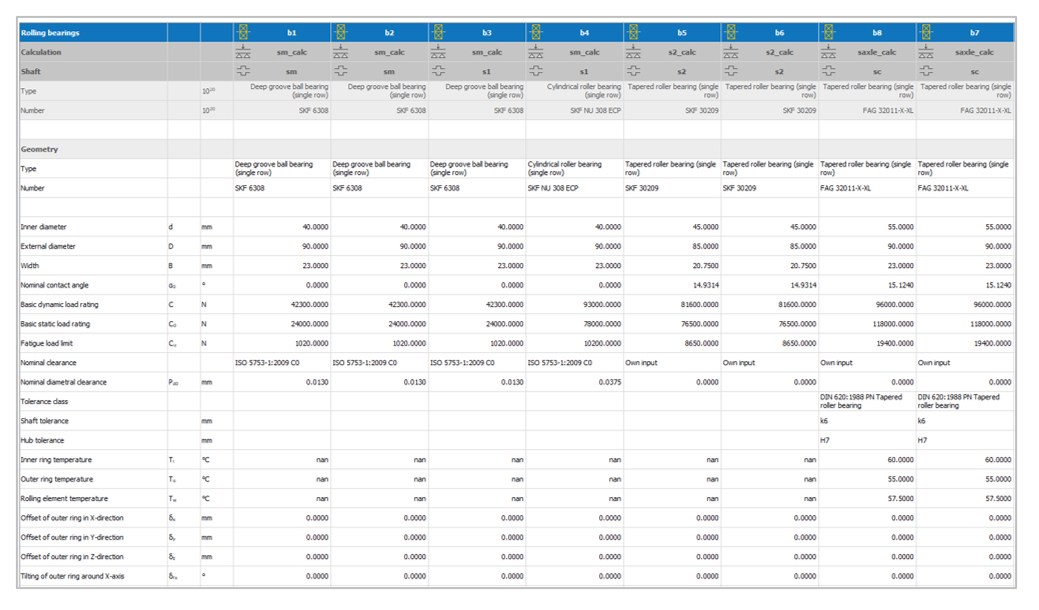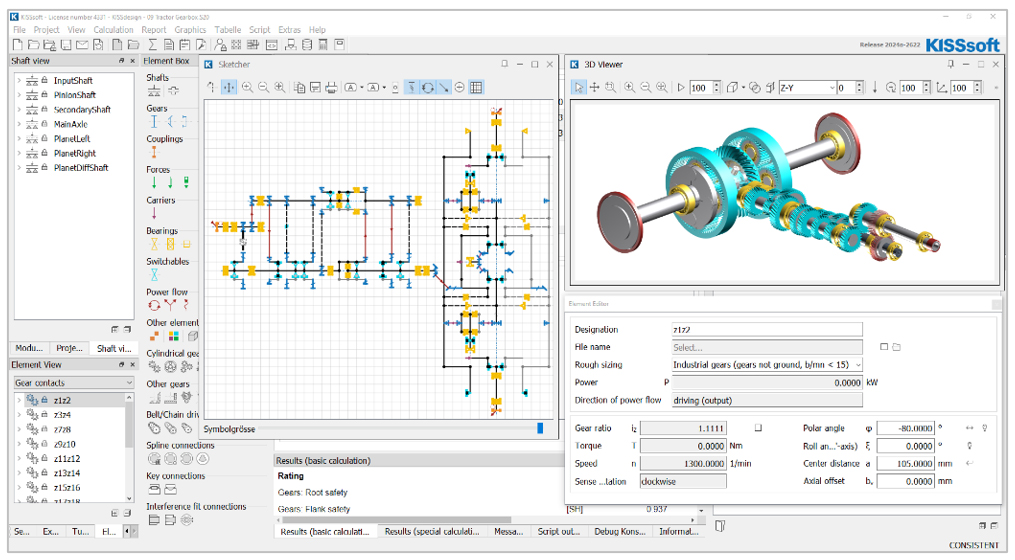
Hanspeter Dinner, Managing Director, KISSsoft AG – A Gleason Company
Speed is a key factor for success. It is as important as costs, value, uniqueness, vision, user acceptance. This holds true for processes, goods, services. And for tools, including the one presented here. A tool that is intuitive to use requires little time to learn. A versatile tool is quickly accepted by a team dealing with many projects or concepts. A tool that adapts to the users’ workflow and integrates seamlessly maintains these processes speed.
Introducing the KISSsoft® System Module!
Use cases
CAE tools like the KISSsoft System Module play a crucial role in the sizing, optimization and rating of gears and other transmission components by addressing key design needs. It supports the design of new transmissions based on end user requirements, allowing for innovative solutions tailored to specific performance goals like reliability, vibration level or transmittable torque. In addition, the System Module is essential for modifying legacy systems to meet new operating conditions like the user of stronger engines, ensuring that older designs remain relevant and functional.
The System Module also supports the re-engineering of reference or competitor designs, facilitating improvements and optimizations of these. By re-creating in the KISSsoft System Module existing designs described through manufacturing drawings, it ensures accuracy and consistency across life cycle stages. One of its powerful features is the ability to manage and compare design variants that share the same topology, allowing engineers to evaluate different configurations efficiently, within a single System Module file.
For variants development, the System Module creates databases with various ratios tailored to different torque ranges, streamlining the design process for different vehicle applications. Furthermore, it assists in visualizing and explaining concepts, preliminary designs, and proposals, making it easier to communicate and promote ideas within engineering teams and to stakeholders.

Finally, the System Module connects and manages available KISSsoft files, safeguarding these valuable component models used for individual analysis, ensuring data integrity and seamless integration of detail information elaborated by junior engineers in complex engineering projects managed by more senior staff. This approach keeps license costs as low as possible.

Features
The System Module combines kinematic analysis, lifetime calculation, 3D graphics, system reports with a programming language. It is the tool of choice for strength and lifetime analysis of various kinds of geared systems and gearboxes. The System Module lets the user do quick and detailed parametric studies of a complete power train in very little time to compare different variants of a concept or to analyze a given design for different loads.
In the System Module, all parts (gears, shafts, bearings, connections) of the gearbox are linked and the strength / lifetime analysis is performed simultaneously for all elements. A three-dimensional graphical presentation of the current state of the system immediately shows the geometrical influence of every change in parameters. This approach greatly accelerates the design process and results in a much more balanced design even during the concept phase.
The machine elements calculated range from gears, shafts, bearings to shaft-hub connections. This will result in a more balanced starting design and fewer modifications will be necessary further down in the design process to reach an optimized design. Furthermore, documentation of the calculation is simplified and all calculation data for a whole drive train or gearbox is stored in a single file. The System Module uses other KISSsoft modules for the strength and lifetime calculations of the various components used in the system.
Basis of all component calculations is the system level kinematics calculation covering
- Speed, torque, and power for complex systems including gears, couplings, speed and torque limiter, multiple boundary conditions
- Modelling of planetary systems like Ravigneaux, Wolfrom, Wilson, Simpson
- Differentials, (with bevel or spur gears), chain and belt transmissions
- Couplings may be activated and deactivated, slippage considered
- Allows for modelling of CVT transmissions
- System ratio and mesh ratio table in Kinematics tab
- Switching matrix for defining gear speeds
- Definition of operating modes, combining different boundary conditions with load spectra

Working modes
With KISSsoft, the user may choose between three working modes:
- Component Level Only: This mode involves using KISSsoft modules other than the System Module. It’s a detailed, low-cost, and time-saving approach suitable for less complex systems where calculations for individual components are done independently from each other. This mode is ideal for projects requiring maximum speed, efficiency, and simplicity.
- System Level: This mode integrates components into a holistic system, combining power flow analysis, spatial and collision-free arrangement, and top-level requirements-driven conceptual design. It is highly efficient for experienced designers with a deep understanding of all aspects of gearbox or transmission design. It is the mode of choice for most licensees globally.
- Collaborative Approach: The System Module supports a team-based design process. Domain experts work on individual components using independent KISSsoft instances, performing detailed sizing, optimization, and analysis. Iterative design improvements are uploaded into the system model, enhancing its fidelity step-by-step.
Switching between these modes is seamless, with data exchange enabled through KISSsoft files as well as bespoke and neutral formats (e.g., Gleason GAMA®, Gleason GEMS®, GDE, REXS).

Return on investment
The System Module’s parameter-based design approach manages the numerous parameters of gearbox and bearing design efficiently, reducing errors from manual data transfer. Experience from hundreds of projects confirms that the module accelerates project timelines and reduces errors, even for basic projects. Once engineers become proficient, they consistently rely on the System Module for its efficiency and accuracy.
The promise is simple and bold: Once an engineer has access to the System Module and knows how to use it, he will always use it, for every project.
